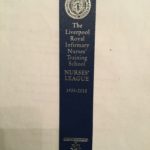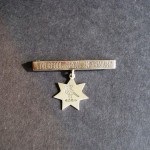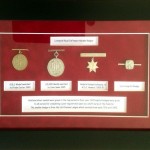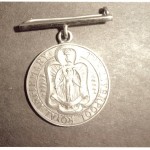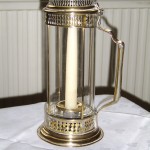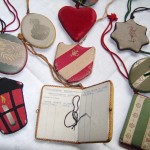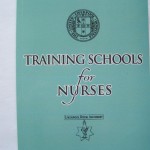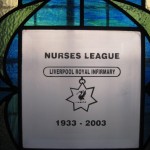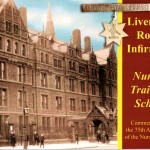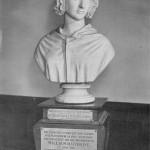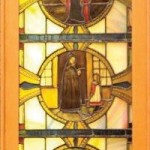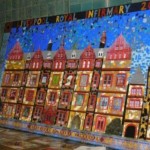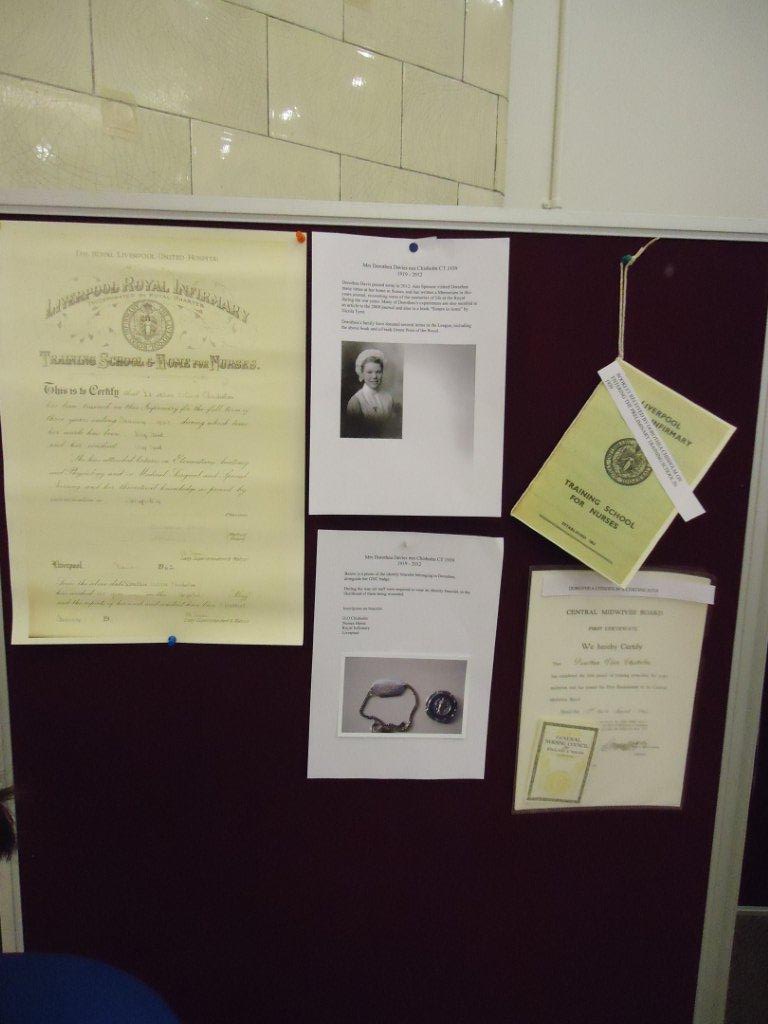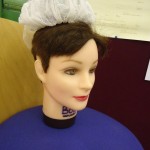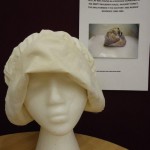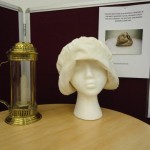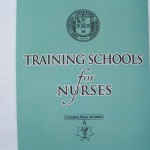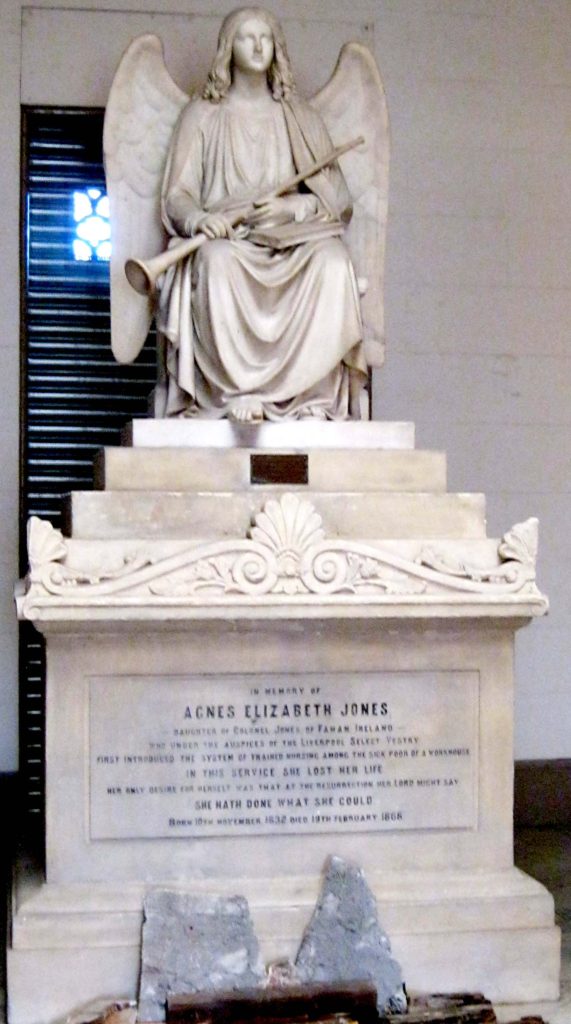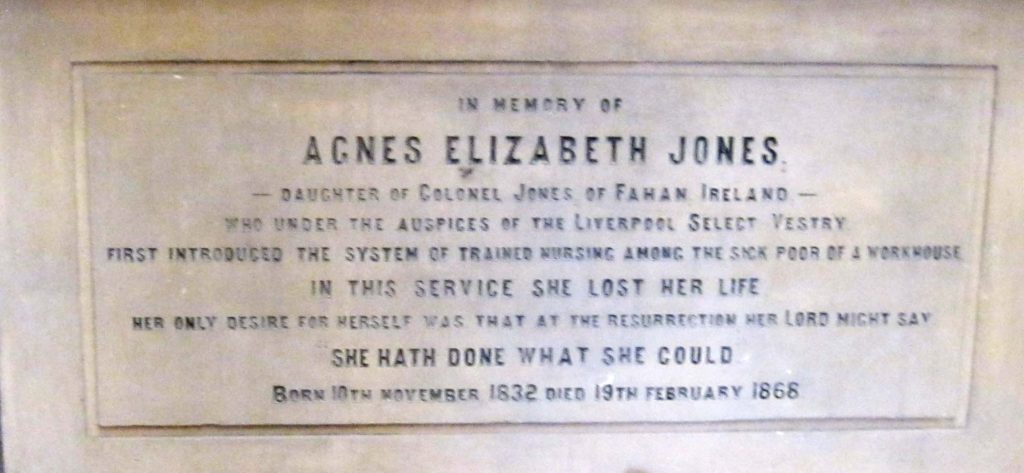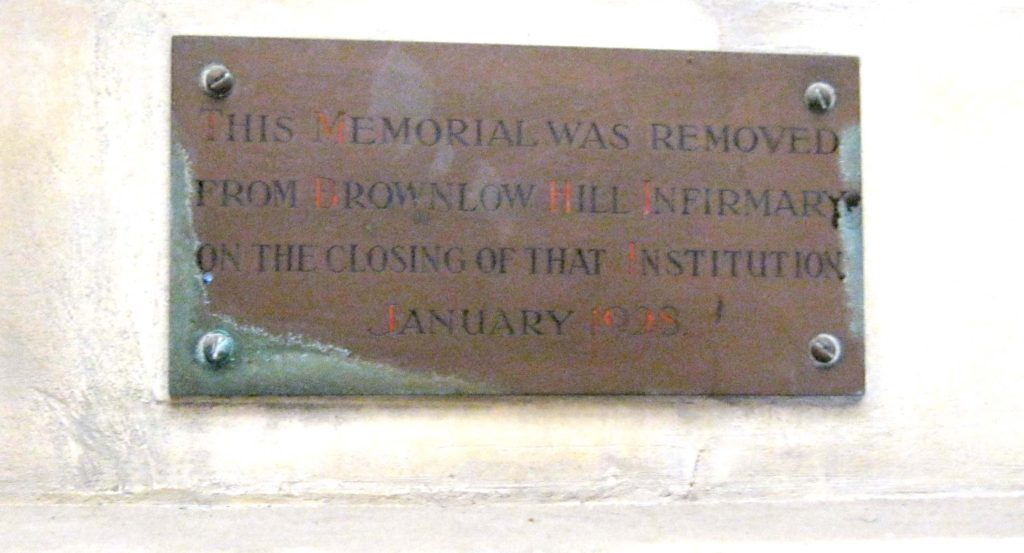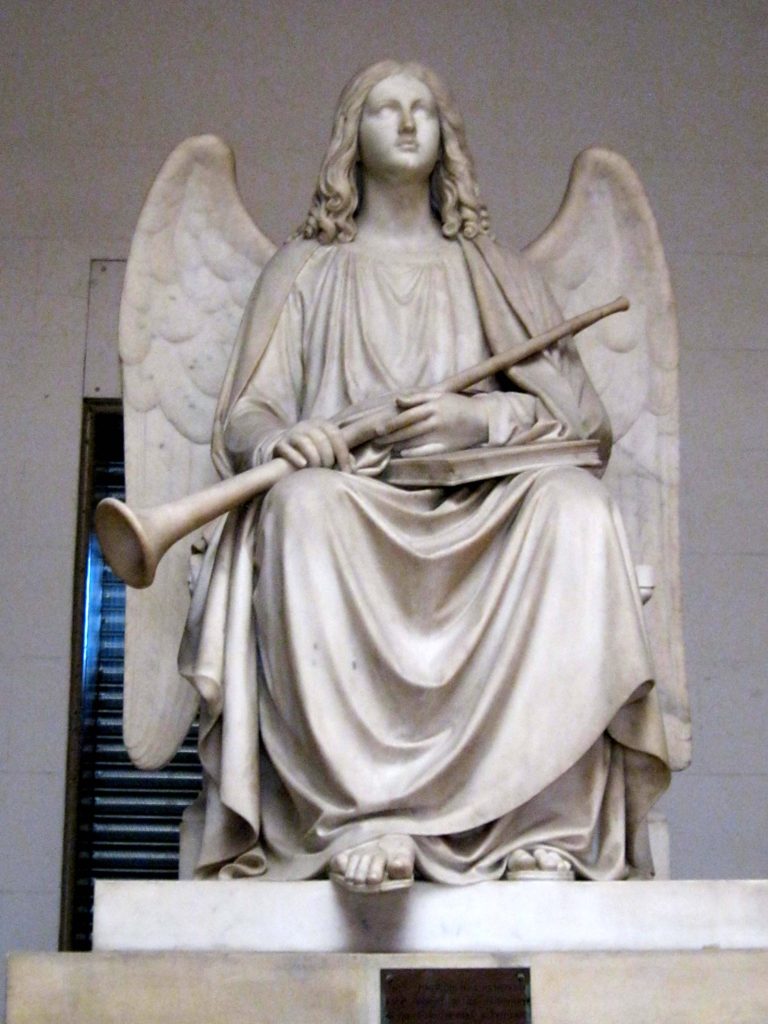Single click on photos to enlarge
- Bookmark given to all League members 2018
- Hospital badge
- Display of Nurses’ Badges and Awards
- Gold medal
- Nightingale lamp
- Pin cushions
- Training school booklet published 2012
- Nurses’ league 1933-2003 (Article about this plaque in history/badges and icons)
- Book of photos published 2008 to commemorate 75th anniversary of the Nurses’ League
- Florence Nightingale Bust
- Nurses’ Window (see History of Nurses League for detail)
- Collage of Liverpool Royal Infirmary worked by children from Sacred Heart Primary School (near Infirmary) and displayed in the chapel at the Extraordinary Journey Exhibition in November 2007
Memorabilia
This is the display featured at the 2013 AGM of some memorabilia of Dorothea Chisholm CT 1939
Featured (alongside her General Nursing Council badge) is a photo of her silver identity bracelet inscribed with her name and Nurses Home, Royal Infirmary, Liverpool. During the war, all staff were required to wear an identity bracelet, in the likelihood of them being wounded.
Also shown was a Training School booklet received by Dorothea on entering the Preliminary Training School in 1939; her final certificate from the training school dated 1942; her GNC Certificate also 1942 and part 1 Midwifery Training Certificate 1943.
Remember This?
Found in a cupboard
This hat was found in an envelope in our fi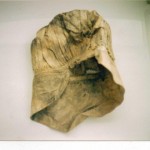 ling cabinet. It was labelled —
ling cabinet. It was labelled —
“Cap found in recessed cupboard in empty Mulberry House, Mullberry Street – formerly Doctors and Nurses Residential 1900 – 1905 or so”
It has been laundered and now looks a lot better than the photo.
Who would have worn a cap like this? Maybe a maid? Any ideas welcome.
22/03/2013 – Liz (nee Gray) suggests it looks similar to the caps worn by Miss Darroch and Miss Poueits as staff nurses (as shown in the 2009 journal page 46). Miss Darroch commenced training in 1914 so would have been a staff nurse around 1918.
150 Years of Nurse Training – booklets
The LRI Executive Committee published a booklet to commemorate 150 years of Nurse Training in Liverpool. The booklet covers the years 1962 – 2012 and follows on from the booklet written in 1962 by Betty Eaglesfield and B.M. Phillips entitled “Liverpool Royal Infirmary Nurses Training School 1862 – 1962.”
This new booklet has been edited by Carolyn Rankine and Mary Newton and is divided into three parts
1. Traditional Training
2. The rise of Professionalism and Regulation
3. Academic Credibility
and concludes with a look into the future of nurse training.
All league members received a free copy of the book in the post.
Agnes Elizabeth Jones
Val Thornes has been to see the memorial to Agnes Jones in St James’ Oratory in the grounds of Liverpool Anglican Cathedral. Here are some photos she took of this stunning memorial.Agnes Jones came to Liverpool aged 28 as the first qualified nurse in the country to be appointed to a workhouse, the Brownlow Hill Institute which stood on the site now occupied by the Roman Catholic Cathedral. The care of sick inmates was left to their fellow inmates but at the suggestion of the Liverpool philanthropist William Rathbone (1819-1902) whose initiative had already established the city as the birthplace of District Nursing it was decided to experiment at Brownlow Hill by employing trained nurses. Agnes Jones took charge and brought immense improvements to the Institute , her achievements being described in these terms by Florence Nightingale
” In less than three years she has reduced one of the most disorderly hospital populations in the world to something like Christian discipline , such as the police had wondered at. She had led, so as to be of one mind and heart with her some fifty nurses and probationers. She had converted a Vestry to the conviction as well as the humanity of nursing the pauper sick by trained nurses, the first instance of its kind in England . She had disarmed all opposition so that Roman Catholic , Unitarian, High and Low Church all rose up and called her blessed.”
In 1868 at the age of 35 she contacted typhus contracted through her work. Her achievements however were of lasting value and the infirmaries where humane, professional care of the sick was provided , pioneered by Agnes Jones in Liverpool and widely imitated ,gradually developed in to the free hospitals from which the modern NHS was created.
The monument represents the Angel of the resurrection ,seated and holding a trumpet , which accords with references to the Resurrection in the inscription on the base, composed by Florence Nightingale and the Bishop of Derry. The statue stood originally in the chapel of the Brownlow Hill Institute but was removed to the chapel of Walton Hospital when the Institute was demolished. In 1989 it was transferred to the Oratory.( taken from booklet provided by Anglican Cathedral)
- Agnes Jones Memorial
- Agnes Jones Plaque text
- Agnes Jones plaque
- Angel On Agnes Jones Memorial

